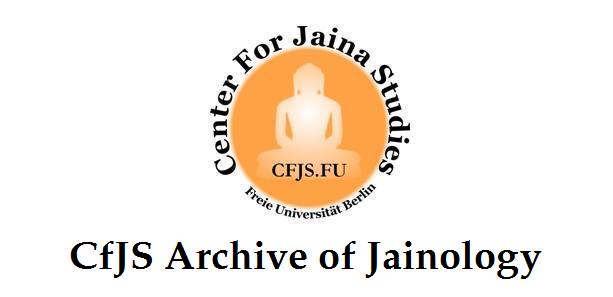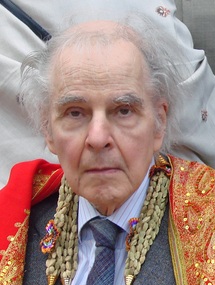
§ 4. Acknowledgements and Bibliography on Kṛṣṇa[14]The simplest classification is always the safest classification. Divisions showing considerable depth produce more problems than Divisions with minimal depth (two to three planes), complex features (true divisions) are less precise than features concerning details (pseudo-divisions). More often than not, true divisions are inaccurate because there is no concomitance (see p. 29 above). Below we supply two pairs of pseudo-divisions (a/b and x/y): -
(a) Kṛṣṇa with two arms
(b) Kṛṣṇa with more than two arms
(x) Kṛṣṇa[14] not Viṣṇuized
(y) Kṛṣṇa[14] Viṣṇuized
It would be tempting to weld the four pseudo-divisions into two true divisions (a-plus-x, b-plus-y). But there is no clear concomitance a/x and b/y. The Viṣṇuization of Kṛṣṇa[14] figures with more than two arms is in most cases not very pronounced, while it is not completely absent from two-armed figures. The tendency to replace true divisions by pseudo-divisions wherever necessary can be described as splitting. The same term can also be used to describe the dividing of more complex true divisions into less complex true divisions (e.g. "Varāha" into theriomorphic and therio-anthropomorphic Varāha). However, "splitting" is not just another word for "classification". It always negates a well-established concept or a seemingly plausible hypothesis. For an earlier discussion of the problem refer to Deogarh[8] § 313.
Below, a classification of the various Kṛṣṇa[14]-images (up to 900 A.D.) is attempted. As indicated already, true divisions could not be established. The variables refer either to entire panels (1-12) or to the Kṛṣṇa[14] figure as such (13-16).
(1)
Concentration[6] of narrative material
(a) One episode (in a particular architectural context)
(b) Several episodes
(c) Entire cycle (childhood to Kaṃsavadha)
(2)
Panel-episode relation
(a) One panel showing one episode
(b) One panel showing several episodes (pre-Kaṃsavadha only)
(3)
Episode-phase relation
(a) One phase shown
(b) Several phases shown
(4)
Biographical section
(a) Episodes of the pre-Kaṃsavadha period (including Kaṃsavadha)
(b) Episodes of the post-Kaṃsavadha period
(5)
Variety
(a) Great variety (Kāliyadamana, Govardhanadhara)
(b) Little variety (the other episodes)
(6)
Frequency
(a) Frequency high (Kāliyadamana, Govardhanadhara, Dadhimanthana, Keśisūdana)
(b) Frequency low (the other episodes)
(7)
Size
(a) Instances of portrayal in large size (Kāliyadamana, Govardhanadhara, Keśisūdana)
(b) Portrayal in small size (all episodes)
(8)
Place of the panel(s)
(a) Vertical series (rare, compare the Mandor stelae)
(b) Horizontal series
(c) Isolated panels on door-frames
(d) Independent panels, main idols
(9)
Vivid/stiff [historical factor not considered]
(a) Vivid
(b) Stiff
(10)
Motifs other than the Kṛṣṇa[14] figure [historical factor not considered]
(a) Well represented
(b) Few, inconspicuous
(11)
Implication
(a) Episode from the Kṛṣṇa[14] legend
(b) Kṛṣṇa "as such" (Veṇugopāla, Kāliyadamana) - not before the mediaeval period
(12)
Material
(a) Stone (most cases)
(b) Terracotta (some cases)
(c) Other materials (no instances)
(13)
Number of arms
(a) Two arms
(b) Four arms
(c) Six arms (rare, perhaps only the panel shown in Fig. 2)
(14)
Hand attributes
(a) Connected with the episode (mountain, flute)
(b) Derived from Viṣṇu (śaṅkha, cakra[4], gadā)
(i) Complete set
(ii) Less than three Viṣṇu attributes
(c) Zero (hands without attributes)
(d) Lotus (Kāliyadamana, connection with Viṣṇu's lotus not clear)
(15)
Hair dress (head dress)
(a) Kākapakṣas (India), Trikakuda (Cambodia)
(b) Curls (Cambodia)
(c) Crown
(d) Other motifs
(16)
Influence of Viṣṇu [variable not uniform]
(a) No Viṣṇu elements
(b) Viṣṇu ideogram for Kṛṣṇa[14] (see § 5.1 and Fig. 1)
(c) Individual Viṣṇu motifs (specific)
(d) Non-specific Viṣṇu motifs (crown, lotus)
(e) Kāliyadamana assimilated to Viṣṇu-on-Garuḍa (pp.40-41).
Kṛṣṇa[14] does not appear in “pantheon images“, showing different deities side by side. The ten-avatāra motif has either Balarāma[2] or "Vāsudeva" (Balarāma[2]'s pendant in iconoplastic art, looking like Viṣṇu pure and simple) or Veṇugopāla (Variable 11). The ten-avatāra motif does not seem to occur before the mediaeval period. Inscribed Kṛṣṇa[14]-images belonging to the periods before 900 A.D. have not come to light.
The author is under a very heavy obligation to Dr. Nagaraja Rao (Director of Archaeology, Karnatak State) who undertook an arduous trip to Badami[1] and Pattadakal[21] in order to secure photographs required for the preparation of this article. The author would also like to thank Dr. Gritli von Mitterwallner (Munich[18]) who placed the Kṛṣṇa[14] photographs from her collection at his disposal and gave her advice on general problems as well as on points of detail. A few photographs (none of them published here) were supplied by other colleagues.
General surveys of the available Kṛṣṇa[14] panels have been undertaken by H. Goetz, U. P. Shah, and K. S. Desai:
More specialized are the following enquiries:
For the literary sources (Mahābhārata[17] and Purāṇas[22]) refer to:
The publications by this author mentioned on p. 26 above are the following:
 Prof. Dr. Klaus Bruhn
Prof. Dr. Klaus Bruhn